Capita spesso di ritrovarsi a guardare un’immagine e comprendere che il proprio concetto di bellezza non è sufficiente per cogliere l’intima ricchezza di ciò che si sta osservando. L’uscita da questo labirinto visivo, volendo, la possiamo andare a cercare dentro la scia luminosa di chi, costantemente, si interroga sul senso delle cose creando nuove immagini con le quali potersi orientare.
Rinko Kawauchi, fotografa giapponese contemporanea, si pone, al cospetto dell’idea di bellezza, abbracciando pienamente la sua antica matrice culturale orientale e, in tal senso, afferma: “Non è sufficiente che la fotografia sia bella. Se non muove il mio cuore, non muoverà il cuore di nessun altro”.
Se proviamo a sposare il concetto di bellezza espresso dalla Treccani, ovvero “Qualità di ciò che appare o è ritenuto bello ai sensi e all’anima”, la nostra esperienza di bellezza sembra quasi impallidire, poiché sappiamo di dedicare troppo poco tempo ad ascoltare i desideri della nostra anima. Questa smania di velocità con la quale ci vestiamo quotidianamente, davanti al pensiero visivo della Kawauchi ci chiede di fermarci e di fare tabula rasa, per cercare, con una lenta riflessione, la risposta alla salvifica domanda: cos’è che muove il mio cuore?
Da questa domanda parte tutto il suo operoso e immenso lavoro di ricerca e credo che proprio da questa domanda dovremmo partire anche tutti noi che entriamo nella nostra vita ogni giorno senza riuscire a contattarci realmente.
Rinko Kawauchi nasce a Shiga nel 1972, studia Graphic Design e Fotografia al Seian Junior College of Art and Design e, in breve tempo, diventa una delle più apprezzate fotografe contemporanee a livello mondiale.
Entra di prepotenza nella scena fotografica nel 2001, pubblicando, contemporaneamente, ben tre album fotografici: Utatane (Pisolino), Hanabi (Fuochi d’artificio) e Hanako (Fiore di bambina).
La Kawauchi, fotogramma dopo fotogramma, esprime, nel suo lavoro, la sua forte visione sull’infinito, partendo dai dettagli che coglie attraverso il suo segno distintivo, dal quale emergono richiami palesi e consapevoli alla tradizione più antica della pittura giapponese, che esprime un gusto verso le piccole cose.
La scelta di cosa fotografare e di come realizzare una fotografia parla di noi e lo fa con una modalità molto diretta, poiché ogni immagine fotografica lascia la nostra impronta unica e indelebile. Così scopriamo, in ogni suo racconto fotografico, il suo viaggio nel quotidiano, raccontato in una dimensione di sogno, nella quale la luce è quasi sempre diffusa e i suoi scatti sembrano quasi emanare un profumo di attesa in cui potersi liberamente abbandonare.
I suoi colori tenui e rassicuranti e i suoi contorni sfumati rivelano un particolare sorprendente, una verità nascosta legata a una profonda spiritualità: come insegna la religione shintoista, infatti, tutte le cose hanno un’anima e lei sa bene come rappresentarla.
Nel dedicarci all’analisi compositiva della costruzione delle sue immagini, affiora un sorprendente rimando a un metodo ben conosciuto nel mondo dell’arte visiva, noto come “visual haiku”. Possiamo partire da una lirica sua dichiarazione di intenti: “Preferisco ascoltare le voci sottili, i sussurri, perché i miei occhi si concentrano sulle piccole cose”.
I lavori di Rinko Kawauchi, espressi sotto forma di narrazioni aperte, combinano poesia ed emozione con rappresentazioni di mortalità e malinconia occasionali e sembrano essere collegati fra loro dal concetto globale di astrazione, dal senso comune di elevazione, che buona parte dell’umanità, da sempre, cerca di catturare o esprimere attraverso l’arte. Da ogni sua immagine, il viaggio che compie il suo fruitore arriva e parte sempre proprio dagli Haiku. L’Haiku, che vede nel maestro Matsuo Bashō uno dei suoi massimi esponenti, nasce nel diciassettesimo secolo ed è una forma minimalista di poesia, composta da tre versi che affrontano una sorta di meditazione su fatti del proprio quotidiano.
È un tipo di poesia dai toni semplici, senza fronzoli, che sintetizza in un’unica immagine le suggestioni della natura. Spesso un haiku descrive un attimo del presente, lasciando al lettore l’immaginazione di completare il resto.
Sono convinta che se proviamo a chiudere gli occhi, ascoltando una voce che declama qualche haiku di Bashō, potremmo facilmente entrare dentro ogni fotografia della Kawauchi, perché avremmo ridotto all’essenza il nostro pensiero razionale e ci saremmo concentrati sulla possibilità, del nostro pensiero astratto, di dare forma e luce a tutte le parole.
Dalla scrittura alla fotografia ogni nostro viaggio potrebbe compiersi, in tal senso, in un continuo senza sosta, alimentandosi di volta in volta fino a produrre un’idea di sguardo circolare che ci sottrae alle distrazioni e ci lascia aleggiare dentro pensieri morbidi intrisi di calviniana leggerezza.
/It often happens to look at a picture and understand that our idea of beauty is not enough to gather the intimate richness of what we are looking. If we want to, we can find the exit from this visual maze inside the light trail of the one who constantly questions the meaning of things, creating new images that can lead us.
Rinko Kawauchi, Japanese contemporary photographer, confronts the idea of beauty, totally embracing her ancient eastern cultural matrix and, in this sense, she says: “A beautiful picture is not enough. If my heart is not moved, it will move the heart of nobody else”.
If we try to embrace the concept of beauty stated by the Treccani Dictionary, that is “Quality of what appears or is considered beautiful for the senses and the soul”, our experience of beauty almost seems to pale, because we know we dedicate too little time to listen the desires of our soul. This urge for velocity, that we wear every day, when facing the visual thought of Kawauchi, asks us to stop and make a clean slate, in order to find with a slow deliberation, the answer to the salvific question: what is moving my heart?
Her diligent and immense research work begins from this question and I believe that it is precisely from this question that we should all begin, we who live our everyday life without being able to communicate properly.
Rinko Kawauchi was born in Shiga in 1972, she studied Graphic Design and Photography at the Seian Junior College of Art and Design and, in a short time, she has become on of the most appreciated contemporary photographers in the world. She makes an impressive debut in the photography scene in 2001, publishing at the same time three albums: Utatane (Nap), Hanabi (Fireworks) and Hanako (Flower child).
Kawauchi, frame after frame, conveys in her work her strong vision on the infinite, starting from the details she gathers through her distinctive mark, from which emerge clear and conscious references to the ancient tradition of Japanese paintings that expresses a taste for the small things.
The choice of a subject and how to take a picture speaks of us and it does that in a very straightforward way, because every picture leaves our unique and permanent mark.
Thus, we discover in all her photo stories, her journey into the daily life, depicted in a dream dimension, where light is almost always scattered and her takes almost seem to release a scent of expectation, where we can freely
love ourselves.
Her soft, reassuring colors and her vague borders reveal a surprising detail, a hidden true linked to a deep spirituality: as Shintoism teaches, indeed, all things have a soul and she knows perfectly how to represent it.
Dedicating ourselves in the compositional analysis of the construction of her pictures, a surprising reference is revealed, to a well-known methodology in the world of visual art, known as “visual haiku”.
We can begin from her poetic declaration of intents: “I prefer to listen the soft voices, the whispers, so that my eye can focus on the
small things”.
The works by Rinko Kawauchi, realized as open narratives, merge poetry and emotion with depictions of mortality and casual melancholy and they seem to be interconnected by the global concept of abstraction, the common sense of elevation that humanity has always tried to reach or express through art.
In all her pictures, the journey undertaken by the observers always begins and ends with the haiku. Haiku, which sees in Matsuo Bashō one of its greatest masters, was born in the seventeenth century and is a minimalistic form of poetry, composed by three verses dealing with a sort of mediation on everyday events.
It is a simple, no-frills poetry that summarizes in a single image the suggestions of nature.
A haiku often describes a present moment, leaving to the reader the imagination to complete the rest.
I am convinced that if we try to close our eyes and listen to a voice reciting some of Bashō’s haiku, we could easily enter into all Kawauchi’s pictures, because we would have reduced our rational thought to its essence and we would be focused on the possibility of our abstract thought, the possibility of giving shape and light to every word.
From writing to photography, our journey could be made, in this sense, in a nonstop continuum, nourished from time to time until it produces an idea of circular view that takes us away from all distractions and allows us to linger into soft thoughts imbued with a lightness worthy of Calvino.


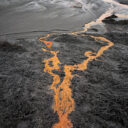
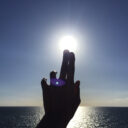

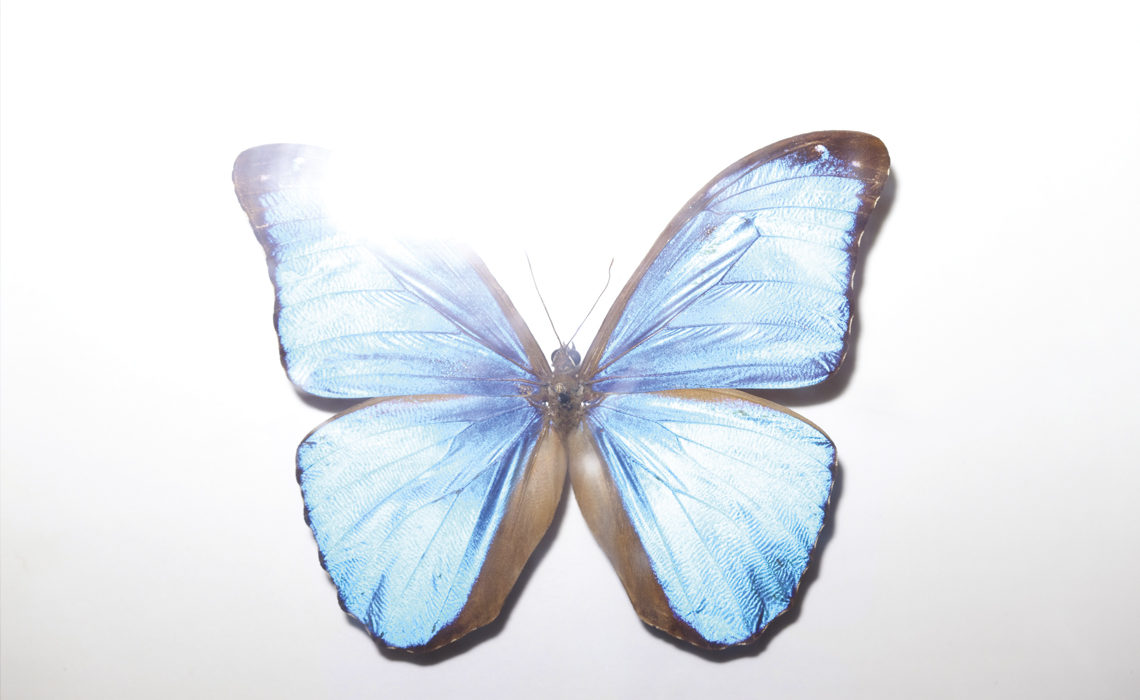
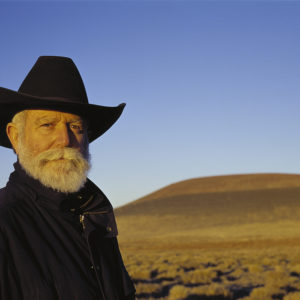
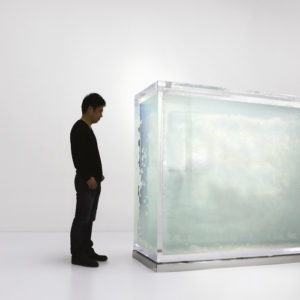
No Comments